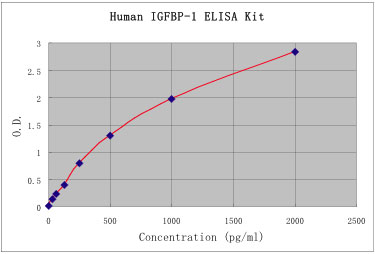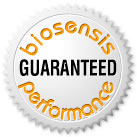|
|
|
Dear Doctor
In this issue of Biospeak, we focus on the Insulin-like Growth Factors (IGF) and the Insulin-like Growth Factor Binding Proteins (IGFBP)
The IGF growth factors, regulated by their IGF binding proteins, signal predominantly through the IGF Type I receptor. The receptor signaling pathway is involved in a wide variety of physiological processes in a wide variety of cell types, tissues and organs. They are reportedly involved in controlling early development and regulating normal physiology. They are also involved in controlling cell proliferation and inhibiting apoptosis and have been implicated in a number of disease states, including cancer. Other components of the IGF signaling pathway include multiple IGF ligands, IGF1R receptor, insulin receptor and hybrid IR / IGF1R receptors.
As the IGFs and IGFBPs are involved in so many processes and the literature so considerable, putting together a list of the latest hot topics depends on where your particular focus is. Nevertheless, here is what drew our attention.
|
|
|
|
|
Mutation studies identify structural and functional roles for Acid-labile subunit (ALS)
| |
D440N mutation in the acid-labile subunit of insulin-like growth factor complexes inhibits secretion and complex formation. Firth, S.M.; Yan, X. and Baxter, R.C.: Mol. Endocrinol., 2011 Feb; 25(2): 307-314
The acid-labile subunit (ALS) is involved in regulating IGF bioavailability in the circulation. IGFs are transported around the body as a ternary complex with ALS and IGF-Binding Protein-3 (IGFBP-3) or IGF-Binding Protein-5 (IGFBP-5). It is not known how the ALS interacts with the IGF/IGFBP complex as the structure of ALS has yet to be determined.
A homozygous missense mutation in ALS (D440N) results in undetectable levels of ALS in the circulation and a corresponding reductions in levels of IGF-I and IGFBP-3. Patients expressing this mutation exhibit mild growth retardation.
In this study, the authors recreate the D440N mutation in human cell lines. The mutation introduces another N-glycosylation site which results in hyperglycosylation, causing both impaired ALS secretion and binding of IGFs.
|
|
The IGF signaling system: Some useful reviews
| |
Cunming Duan, Clifford Rosen, Derek LeRoith and David Clemmons will be names well known to anyone working in the IGF area. These researchers have all written concise reviews on the area recently. All are well worth reading.
Insulin-like growth factors (IGFs), IGF receptors, and IGF-binding proteins: roles in skeletal muscle growth and differentiation. Duan, C.; Ren, H. and Gao, S.: Gen. Comp. Endocrinol., 2010 July 1; 167(3): 344-351
The IGF-I regulatory system and its impact on skeletal and energy homeostasis. Kawai, M. and Rosen, C.J.: J. Cell Biochem., 2010 Sept 1; 111(1): 14-19
Minireview: IGF, Insulin and Cancer. Gallagher, E.J. and LeRoith, D.: Endocrinology, 2011, 152(7), 2546-2551
IGF-1 and bone: New discoveries from mouse models. Yakar, S,; Courtland, H.W. and Clemmons, D.: J. Bone Miner. Res., 2011, Dec, 25(12), 2543-2552 Erratum in: J. Bone Miner. Res., 2011 Feb; 26(2): 439.
|
|
Therapeutic targets of the IGF system
| |
Targeting IGF-I, IGFBPs and IGF-I receptor system in cancer: the current and future in breast cancer therapy. Mohanraj L, Oh Y.: Recent Pat Anticancer Drug Discov., 2011 May 1; 6(2): Â 166-177
Imbalances in the IGF system are known to be involved in the progression of breast cancer. Interest in a potential therapeutic target in the IGF system has focussed on the IGF-IR. A novel cell death receptor that specifically binds IGFBP-3 was identified and it has been shown this receptor may be impaired in breast and prostate cancer. In this review, the authors present the mechanisms used to target the IGF system as a therapeutic, with particular reference to breast cancer. They also summarise the other current therapeutic approaches and the latest patents published on IGF-I/IGF-IR and IGFBP-3/IGFBP-3R systems.
|
|
Easy, quick, reliable and accurate identification of key components of the IGF system
| |
Be sure of your results using Biosensis IGF and IGFBP ELISA Kits.
Biosensis makes it easy to identify critical components of the IGF and IGFBP system with a range of ready to use ELISA Kits. The Kits come with all the standards and reagents necessary to easily, quickly, accurately and reliably assay IGF-I, IGF-II, IGFBP-1 and IGFBP-3 in a variety of systems and species. Being able to trust your results and get them quickly means you've more time for more quality research.

IGF-I ELISA kit
IGFBP-1 ELISA kit
Human IGF-II ELISA kit (BEK-2029-2P)
Human IGFBP-3 ELISA kit (BEK-2032-2P)
Biosensis has nearly 200 ELISA kits. To view the full range of kits and antibodies, visit our web site at www.biosensis.com.
A number of IGF antibodies and ELISA kits are under development and will be available soon. If you want more information, please email us at biospeak@biosensis.com.
|
| The Biosensis UNCONDITIONAL Guarantee | 
Should your manuscript ever be rejected by ANY journal because of insufficient information about a Biosensis antibody, we will gladly refund TWICE the purchase price of that antibody!
|
By researchers for researchers!
Our staff have over 60 years experience in manufacturing and using antibodies and over 340 peer reviewed research publications. If you have any questions, one of our experienced researchers is always there to help at biospeak@biosensis.com. Until next time, good luck with your research.
Sincerely,
Tina
P.S. Have you missed previous issues of BioSpeak? Click Here |
|
|
|
|
|
|